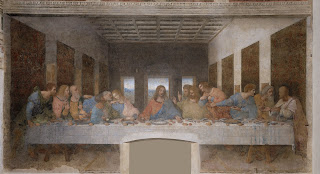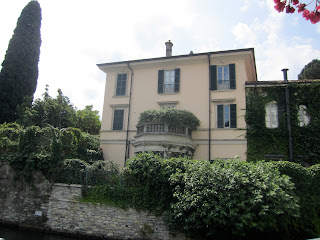On
Wednesday we visited the Brera Museum called Pinacoteca di Brera.
There are a lot of old Italian paintings related to the church, as
well as a small portion of early 20th century paintings, and other
paintings following the Renaissance.
Two paintings especially stood
out for me, both depicting Jesus at a supper. One was "Supper at
Emmaus" by Caravaggio. The dramatic lighting effects that he
implemented (called chiaroscuro, where there seems to be one light
source creating dramatic contrasts in the image) lends much gravitas
to most of his works. Another painting that stood out was Peter Paul
Ruebens painting of the last supper. This one contrasted with the
Leonardo version that I saw the previous day. One interesting element
that I enjoyed is that Judas, Jesus' betrayer, is looking out at the
viewer, almost as if he is the focal point of the painting.
Other
interesting paintings I saw were of St. Francis by one of my favorite
painters, Dominico Theotocopolous, otherwise known as El Greco. His
paintings stand out for me because he had a very unique style that
cannot be placed in one school or another. That said, this small
painting was not one of his finer ones. Although I would have liked
to buy a postcard of the painting, the museum did not have one, and
even in their souvenir book, it was not included.
One final painting that stopped me for a few moments was a painting of St.
Jerome by Jusepe Ribera, a painter I had never heard of. It was in
the same room as the Caravaggio, perhaps because it helps illustrate
the influence that Caravaggio and his chiaroscuro style had on other
painters. However, the image of a frail old man staring at a skull he
holds in his hands forced me to sit down and stare at the painting
for several minutes.
Another
side effect of going to an art museum with many different people is
that many different opinions are heard about good art and bad art,
and what art is supposed to be, and what artists are supposed to be
doing. I find it humorous that non-artists would have such strong
opinions on what another person's job is, especially never having
performed that job themselves. I also find it humorous when people
offer their strong opinions as if they were the last word on the
subject, especially when it comes to modern art, and with claims that
this period of art was far superior to that period, and the peaks and
valleys that the evaluative quality of art has experienced through
history. It seems to me that for any proper evaluation of art, or
anything for that matter, one must look at the work in context of its
place and its creation in history and location and social context.
Rarely do I hear people talk about this; instead, it is "this
looks ugly," or "This looks beautiful." Surely those
are some of the reasons to enjoy art, and if one only focuses on what
he finds beautiful, he may have a wonderful life. However, there is
also so much more to explore within paintings, music, architecture,
sculpture, and everything else. And so it seems to me that when I ask
more questions about this or that, or explore curiosities a little
deeper, there may be much more that can be enjoyed.
















